Designs for 5 Brooklyn Mega-Projects That Got Left on the Drawing Board
This month marks Brownstoner’s Steel Anniversary. We’re taking some time to look back at our past, even as we design a new future. Mega-projects. These enormous neighborhood-changing visions have the power to create controversy and community outcry like little else. Some never make it off the drawing board. In the moment of proposal, mega-projects may seem unstoppable….
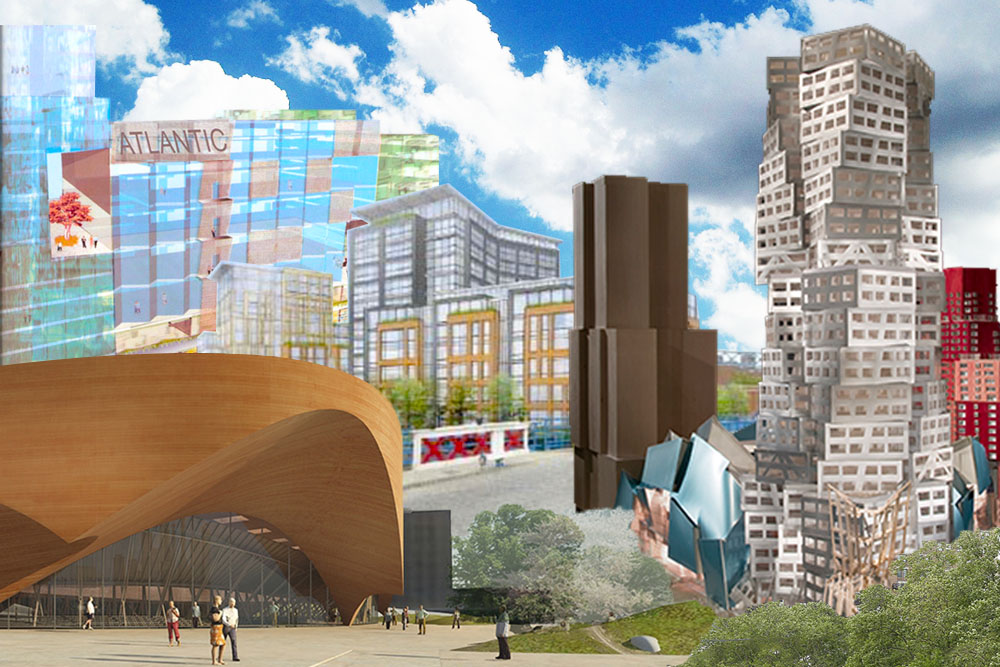
This month marks Brownstoner’s Steel Anniversary. We’re taking some time to look back at our past, even as we design a new future.
Mega-projects. These enormous neighborhood-changing visions have the power to create controversy and community outcry like little else. Some never make it off the drawing board.
In the moment of proposal, mega-projects may seem unstoppable. Or utterly outlandish. But with time, even these controversies can fade from our memories. Here are five whose original designs never made it from dream to reality.
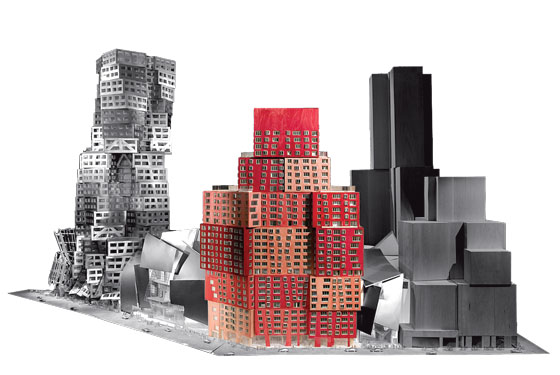
Rendering from Gehry Partners
Frank Gehry’s Atlantic Yards
Where: Downtown Brooklyn
Developer: Forest City Ratner
Architect: Frank Gehry
Viable: 2003-09
The Plan: Frank Gehry’s vision for Atlantic Yards included an undulating Nets stadium and four-ish surrounding towers with 2.1 million square feet of commercial space and 4,500 apartments. The signature building would have been the Gehry-esque 620-foot-tall Miss Brooklyn office tower. When discussing his design, Gehry talked about understanding “the body language of Brooklyn.”
What Went Wrong: The recession hamstrung the timeline, and massive community opposition didn’t help. Then Ratner couldn’t find an anchor tenant for Miss Brooklyn. And Gehry said he thought the whole Atlantic Yards project was toast. So, Ratner gave Gehry the boot and started building a scaled-down version of Atlantic Yards with other architects.
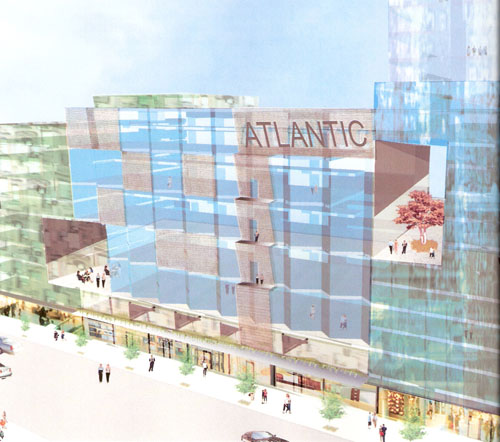
Rendering from Hamlin Ventures, Times Equities and Common Ground Community
A Bigger, Better House of Detention
Where: Downtown Brooklyn
Developer: Never chosen
Architect: Never chosen
Viable: 2006-10
The Plan: The city decided it was a good idea to expand the then-empty House of Detention on Atlantic Avenue, bring back thousands of inmates, and also add ground-floor retail — and maybe even an elementary school — to the site. They even received a proposal from Hamlin Ventures and a rendering from Skidmore, Owings & Merrill featuring a Trader Joe’s.
What Went Wrong: The city claimed that they didn’t get enough interest from architects and developers to build up the potential commercial spaces of the site. Then, they balked at the cost of expanding and renovating just the jail: upwards of $450 million. Oh, and the neighborhood was vehemently opposed. In spite of support from Department of Correction Commissioner Martin Horn, the expansion plans disappeared like a thief in the night.
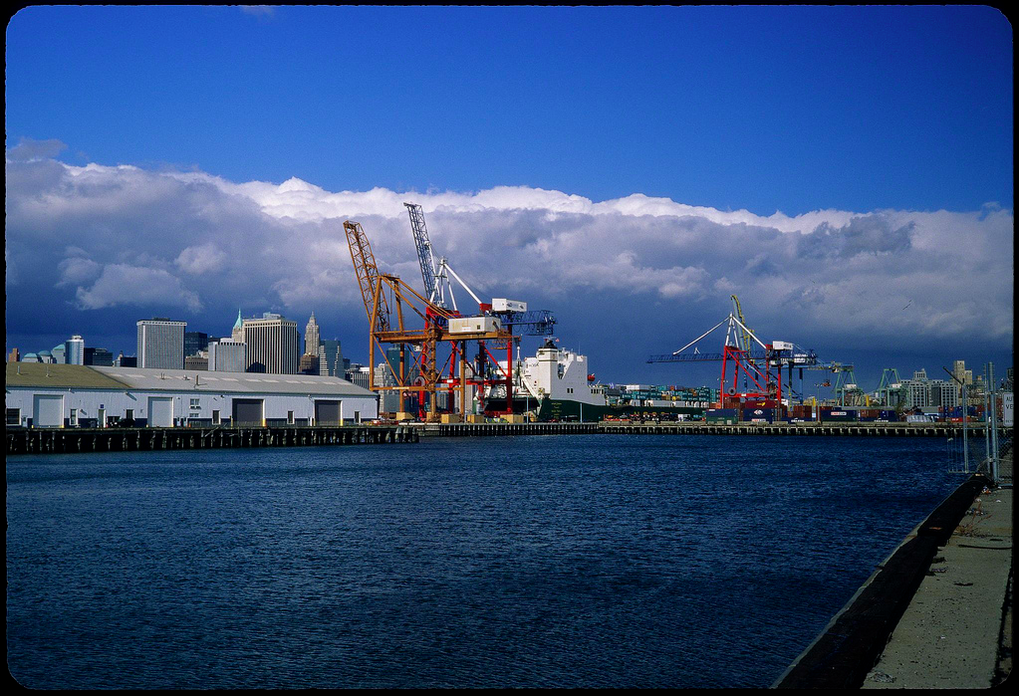
Photo by spiffae
An End to the Red Hook Container Terminal
Where: Columbia Street Waterfront
Developer: Never chosen
Architect: Never chosen
Viable: 2005-08
The Plan: In the heady days of 2005, New York City’s Economic Development Corporation decided that Columbia Street was going to be the next hot thing. To capitalize on its future success, they floated a plan to replace the Red Hook Container Terminal with a waterfront eden replete with a luxury marina, hotels, restaurants, and retail spaces. Bruce Batkin and Durst Organization both sent in proposals for the site.
What Went Wrong: The city took a moment and reconsidered its plans. Apparently they were unsatisfied with the proposals it received. In 2008, the EDC signed another 10-year lease with American Stevedoring, the company that was already operating the piers and gantry cranes at the Container Terminal. But it seems like every couple of years, someone else says “hey, we should do something with that Terminal” — a new report released in January revisited the plan, advocating for the city to sell off the Red Hook Container Terminal and build housing.
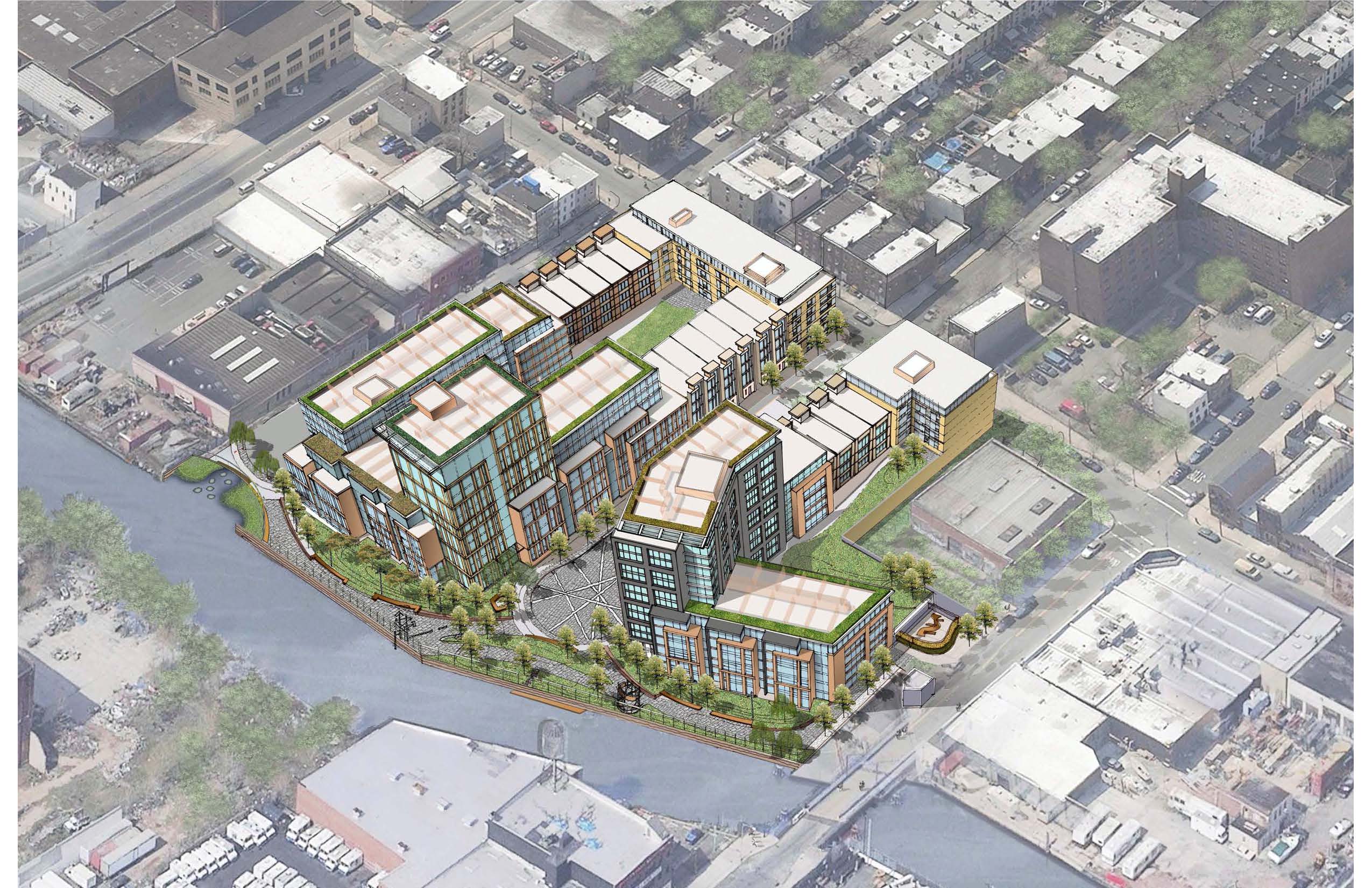
Rendering from Greenberg Farrow
Toll Brothers’ Gowanus Development
Where: Gowanus
Developer: Toll Brothers, L&M Equity
Architect: Greenberg Farrow, Lee Weintraub
Viable: 2007-10
The Plan: Toll Brothers wanted to build a 605,380-square-foot development along the Gowanus Canal, including 577 units of housing (130 of them affordable), 2,000 square feet of “community space,” and 2,000 square feet of retail in the area roughly bounded by Bond Street, Carroll Street, 2nd Street and the glorious waters of the canal. The whole thing would be finished by 2011. Even then-Council Member Bill de Blasio was a supporter. All they needed was a little rezoning, and the city was happy to provide.
What Went Wrong: The ULURP process was rudely interrupted by an EPA announcement that the area was being considered a Superfund site. Though the rezoning eventually went through, the developer didn’t want to wait the decade it would take to clean up the canal. When they tried to back out of the purchase of one of the megaproject’s lots, the seller sued. Then the Gowanus was officially declared a Superfund site, and Toll Brothers said “no go.” But developer Lightstone was happy to carry the torch.

Rendering from Thomas Phifer
Brooklyn Heights Velodrome
Where: Brooklyn Bridge Park
Developer: Never chosen
Architect: Thomas Phifer
Viable: 2012-13
The Plan: An intensely private philanthropist named Joshua P. Rechnitz pledged $40 million to Brooklyn Bridge Park for the creation of a 2,500-seat fixed-gear bike racing arena — a velodrome. It would be located inside of a 115,000-square-foot field house near Pier 5, at the site of a former Furman Street warehouse. Though some of the neighbors weren’t hot for the velodrome plan, Rechnitz’s $40 million pledge was double the largest gift ever made to the city’s parks department.
What Went Wrong: The design. Rechnitz and the BBP couldn’t settle on a viable design for the velodrome/field house. Because the Brooklyn Heights promenade would overlook the structure, the roof had to look pretty and interesting (read: expensive). Even after Rechnitz upped his gift to $50 million, it wasn’t enough to build the aesthetically proper building.
What’s your favorite never-realized mega-project?
Related Stories
Brownstoner Celebrates Its Steel Anniversary
How Barclays Center Changed the Face of Brooklyn With Corten Steel
A Guide to Brooklyn Bridge Park Controversies, as Told in 10 Years of Brownstoner Headlines





What's Your Take? Leave a Comment